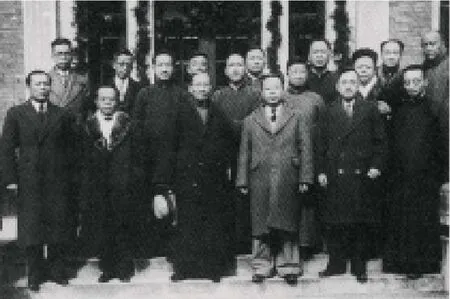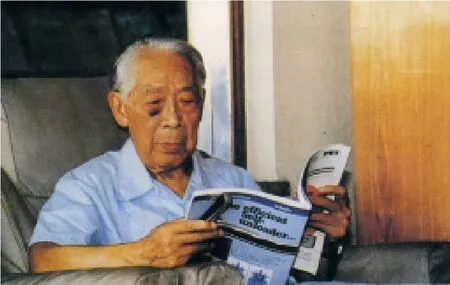院士风采
2012-07-06

茅以升1896.01.09~1989.11.12
桥梁工程专家、教育家。江苏镇江人。1916年毕业于唐山工业专门学校。1917年获美国康奈尔大学硕士学位。1919年获卡内基理工学院博士学位。铁道科学院研究院研究员。30年代打破外国人的垄断,在自然条件比较复杂的钱塘江上主持设计、组织修建了一座基础深达47.8米的双层公路铁路两用桥,获得了重大成就。钱塘江桥的建成,成为中国桥梁史上的一个里程碑。在工程教育中,始创启发式教育方法,致力教育改革,培养了一批杰出的桥梁工程专门人才。主持铁道部科学研究院三十余年,为铁道科学技术进步做出了卓越的贡献。他是我国土力学的开拓者,也是杰出的科普工作者。
1955年被选聘为中国科学院院士(学部委员)。
Bridge engineering expert and educationalist. Born in Zhenjiang,Jiangsu Province. Graduated form Tangshan Technical Institute,Jiaotong University in 1916. Received MS from Cornell University,USA in 1917 and Ph.D. from Carnegie Mellon University in 1920.Research professor, China Academy of Railways Sciences.
In the 1930s,Mao broke foreign monopoly and took charge of designing and organizing the construction of Qiantang Bridge, a double-deck railroad combine bridge with the foundation of 47.8 meter deep under complex natural conditions. The bridge was a significant achievement and became a milestone in China’s bridge history. He initiated elicitation method in education, devoted himself to education reform and trained many outstanding talents for bridge engineering.He was in charge of the China Academy of Railways Sciences for more than 30 years and made remarkable contributions to the development of railway science and technology. He was a pioneer in soil mechanics and an outstanding popular scientific worker.
He became Member of the Chinese Academy of Sciences in 1955.

周 仁1892.08.05~1973.12.03
冶金学家和陶瓷学家。江苏江宁人。1910年毕业于江南高等学校。1915年获美国康奈尔大学硕士学位。中国科学院上海冶金研究所所长、研究员。中国电炉炼钢的创始人之一。1929年,在他领导下,建立了三相电弧炉,练出不锈钢、锰钢、高速钢等。抗战期间,负责在昆明创办了中国电力制钢厂,任总经理兼总工程师,生产出自流井提盐卤用的钢丝绳及其它合金钢。50年代初,率先研究成功并推广应用球墨铸铁。后又在研究所内建立了实验小高炉,对包头含氟稀土铁矿和攀枝花钒钛磁铁矿的冶炼与开发利用,进行了探索研究,为两个矿高炉冶炼工艺的确定提供了可靠的实验依据和精辟的理论分析。他积极倡导开展国瓷研究,撰写了多篇论文。
1955年被选聘为中国科学院院士(学部委员)。
Metallurgist and ceramist. Born in Jiangning, Jiangsu Province.Graduated from Jiangnan Institute of Education in 1910. Received MS from Conell University, USA in 1915. Director and research professor,Shanghai Institute of Metallurgy, Chinese Academy of Sciences.
As one of the pioneers in electric furnace steel making, Zhou built the first three-phase arc furnace in Chin in 1929 and produced different grades of stainless manganese and high-speed steels in this furnace. During the Anti-Japanese War, he founded the Chinese Electric Steel-Making Works at Kunming and served as the general manager and chief engineer of this firm. The chief task achieved by his firm was the fabrication of high-strength steel strands of heavyduty cables used for lifting brine buckets in Ziliujing, the principal salt supplier in the Southwestern China. In the early 1950s, he endeavored in manufacturing modular irons and extending their application in machinery. In the late 1950s, he established the prototype blastfurnace in Shanghai Institute of Metallurgy in order to study in delails the smelting processes for the rare-earth and fluoride containing Baotou iron ore and the V-Ti rich Panzhihua magnetite ore. His results laid a sound scientific foundation for the optimization of iron smelting processes for Baotou and Panzhihua ores. As a forerunner in ceramics,he showed great enthusiasm over ancient Chinese porcelain and zealously advocated the study of some lost glazing technology in ancient pottery.
He became Member of the Chinese Academy of Sciences in 1955.


孟昭英1906.12.24~1995.02.25
电子学、物理学家。河北乐亭人。1928年毕业于燕京大学。1936年获美国加利福尼亚理工学院哲学博士学位。清华大学现代应用物理系教授。1943年~1944年人美国加州理工学院教授。1944年~1946年任美国麻省理工学院雷达研究所(Radiation Lab.)研究员。著有《阴极电子学》一书,以及Linear Plate Modulation of Triodes 和Oxygen Microwave Absorption Spectrum 等论文。此外还翻译过不少苏联教材。曾在美国取得一项精确测量波导中阻抗的专利。
1955年被选聘为中国科学院院士(学部委员)。
Specialist in electronics and physics. Born in Leting. Hebei Province. Graduated from Yanjing University in 1928. Received Ph.D. from California Institute of Technology, USA in 1936. Professor,Department of Modern Applied Physics, Tsinghua University.
Meng was a visiting professor in the California Institute of Technology, USA from 1943 to 1944 and research professor in the Radiation Laboratory, MIT from 1944 to 1946. He is the author of the monograph of “Cathode Electronics of Triorles” and several articles, such as “Linear Plate Modulation” and “Oxygen Microwave Absorption Spectrum”. Additionally, he translated a lot of teaching materials from Russian. He holds a patent of precision measurement of impedance in waveguides in the USA.
He became Member of the Chinese Academy of Sciences in 1955.


周志宏1897.12.28~1991.02.13
冶金、金属材料专家。江苏丹徒人。1923年毕业于北洋大学。1924年赴美国学习,先后获卡内基工学院硕士学位和哈佛大学博士学位。上海交通大学教授、顾问。长期从事物理冶金和钢铁冶炼研究。1930年,研究成功了中国最早的大型铸锻件,完成了钱塘江大桥的桥梁桥座的铸造和加工任务。研制坩埚炼钢,冶炼出中国第一批高质量的锋钢、冲模钢、磁钢、不锈钢,还自行设计电炉、试制出纯钨钨铁、矽铁等金属材料,是我国工具钢、高速钢和不锈钢的首创者。1949年后,研制了少含、不含镍和铬的滚珠轴承钢。1960年,首先提出了氧气顶吹转炉炼钢法,并在工厂生产中得到应用。1978年又提出了顶底双吹氧转炉炼钢法。
1955年被选聘为中国科学院院士(学部委员)。
Metallurgist and metal materials expert. Born in Dantu, Jiangsu Province. Graduated from Beijing University in 1923. Went to USA in 1924 for further study and received MS from Carnegie Institute of Technology and Ph.D. from Harvard University. Professor and advisor,Shanghai Jiaotong University.
Zhou devoted himself for a long time to the research on physical metallurgy and iron and steel smelting. In 1930, he sought and completed for the first time in China the large cast and forge pieces and accomplished the task for casting and processing the seat and abutment of Qiantang River Bridge. He was the first among the Chinese pioneers to manufacture tool steel, high speed steel and stainless steel.He developed and fabricated the crucible-smelting steel, produced smeltingly the first patch of Chinese high quality rapid steel, die steel,magnetic steel and stainless steel, and designed by himself the electric furnace to produce metal materials such as pure iron tungstate and silicon iron. After 1949, he developed and fabricated the ball bearings steel containing less or no nickel and chromium. In 1960, he first proposed the oxygen top-blow converter steel smelting process which was employed in the production in factories. He proposed the oxygen top-bottom double blow converter process in 1978.
He became Member of the Chinese Academy of Sciences in 1955.

